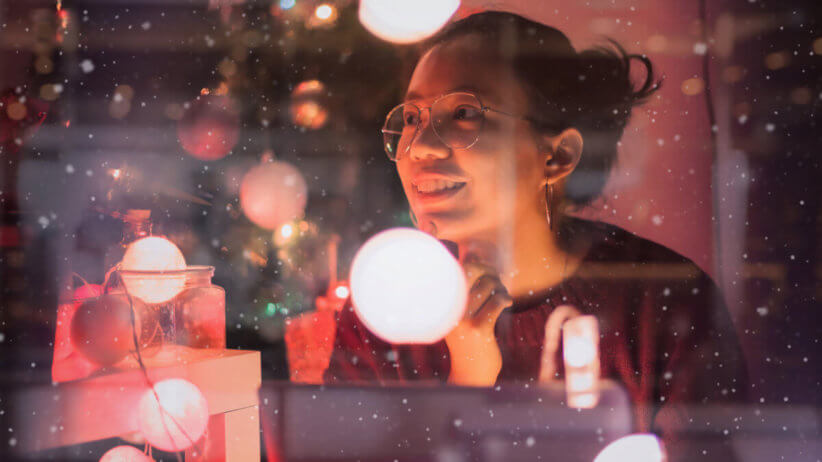Her desire to help kids in need went hand-in-hand with her green attitude, and gradually evolved into a vision. And it all started with a couple of discarded, rescued, and recycled plastic toys that she donated for the holidays.
Sasha Lipton grew up in a New Jersey town, about a half-hour outside of Manhattan. In 2006, at age 15, she looked around her and saw a lot of sadness — families living in nearby communities who were struggling to put food on the table and couldn’t afford to buy toys for their kids. She felt compassion for them and decided to take action.
Fast forward eight years. Thanks to Second Chance Toys, the organization that Lipton founded as a teen, nearly 200,000 gently used, donated toys have been distributed to local organizations serving kids in need, like Head Starts and family shelters. In so doing, Second Chance Toys has helped keep 40 tons of non-biodegradable plastic out of our landfills.
Lipton calls her movement “recycled love and a second chance.”
Due to its partnership with Kohl’s early on, Second Chance Toys got much-needed funding to create a website and hire a full-time employee.
And on Thanksgiving Day 2014, in the spirit of gratitude, Lipton, now 24, appeared on “Good Morning America” to talk about her life’s work and Second Chance Toys abcnews.go.com/GMA/video/chance-toys-recycles-unwanted-toys-27218383.
Standing beside a ginormous box overflowing with an array of rescued toys, Lipton, who currently lives on the Upper West Side, described the impact her organization has made on so many kids’ lives, and reminded viewers to donate toys for the holidays.
The Second Chance Toys story
NY Parenting spoke with Lipton about Second Chance Toys and what’s next.
Tammy Scileppi: What were the circumstances that led to Second Chance Toys?
Sasha Lipton: I came up with the idea for Second Chance Toys in high school, while driving around on a big garbage collection day. I noticed that so many people were throwing away plastic toys and I knew that there were so many kids in towns not far from mine (in New Jersey) whose parents couldn’t afford those toys. Additionally, I knew the toys were headed straight for the landfill — and that throwing out these plastic toys presented a hazard to our environment.
When I began collecting plastic toys, I enlisted my mom (and her sports utility vehicle, since I couldn’t drive yet) and we started retrieving these toys from the curb, one by one, until our basement was filled. We then cleaned and tagged them with notes for the new owners, and delivered them to a family violence shelter in Newark.
TS: How can people get involved?
SL: The small idea I had really took off and has become contagious because anyone can join in and help! Whether you want to donate, collect, or receive toys, just visit our website, www.secondchancetoys.org, for information.
And we couldn’t have expanded without the help of corporate partners like 1-800-Got-Junk, Kohl’s, and Old Spice.
TS: Describe your “Good Morning America” experience.
SL: It was so exciting for me to be able to share the Second Chance Toys story with millions of viewers watching “Good Morning America.” I especially loved the big toy box they created and I thought it was awesome that they held a toy drive of their own, with all of the producers, so that we would have toys for the segment and so that they could make a donation to children in need.
TS: So, what’s next?
SL: We want to continue expanding across the US and make Second Chance Toys a household name. I hope that someday people everywhere will know that they can donate their toys to other children and that there is no need to throw them away. In order to do this we are looking to connect with a national retail partner that would hold collections during the holidays or Earth week. We are also always looking for new corporations to partner with that will help us grow.
TS: What do you do in your spare time?
SL: I love to workout (mostly barre and spin classes), cook or bake, try new restaurants, and get outdoors as often as possible!
While Lipton sits on the board of Second Chance Toys, she also has a “day job,” working as a digital producer at Everyday Health for the past year and a half. Each summer, her company hosts an event in which employees divide up amongst various organizations and spend their day volunteering.
Recycled love &
pro-social millennials
Millennials like Lipton are eager to make a difference. She is a shining example of how pro-social behavior benefits others by changing people’s lives for the better and helping make the world a nicer place in which to live. With Second Chance Toys, she says she has the ability to put smiles on children’s faces — and that’s a powerful thing.

The Millennial Generation (about ages 18 to 33) is made up of extremely ambitious young people who believe in good causes and have high expectations for themselves, as well as for those around them.
In fact, one in-depth, worldwide study by Deloitte revealed that many millennials, like Lipton, tend to be very charitable: 63 percent donate to charities, 43 percent actively volunteer or are a member of a community organization, and 52 percent have signed petitions. And a new study on millennials in the workforce shows that 88 percent — especially young women — gravitate toward companies with strong corporate social responsibility programs. More and more companies have been focusing on addressing a variety of social and environmental issues.
Solange Charas, a gender-in-the-workplace expert, weighs in why young women like Lipton are leaders in the business of helping others.
“Women want their work to have meaning and purpose — for them to have a feeling of usefulness and worth, to feel like they make a difference, that they have some control over their jobs and lives and that they are socially included,” she explains. “There is a draw for women to work at organizations with a strong culture of giving back because of what those organizations stand for — namely, providing a context for purpose and meaning of their work. I think this is particularly important for women, as they have a natural (and learned) propensity to take care of others, and organizations that align their mission and vision with taking care of others, naturally resonates with women.”
“Organizations that have strong corporate social responsibility cultures are good at connecting the dots of what employees do in their work, and how it impacts the world — or provides a social good, like Toms, [a company that matches every pair of shoes purchased with a pair of new shoes for a child in need],” she adds.
Reputational Institute has identified the top-10 corporate-social-responsibility-organizations as:
• Microsoft
• Disney
• BMW
• Apple
• Daimler (Mercedes Benz)
• VW
• Sony
• Colgate-Palmolive
• LEGO Group
Making a difference
It’s the dawn of a new year, so in the spirit of giving back and de-cluttering, why not ask your kids to donate their gently used toys, as they make room for all those cool, new gifts they got over the holidays?
The process can also serve as a teaching moment: You have to give to get.
Second Chance Toys holds two toy drives annually: One in December and another for Earth Day, in April.
Visit www.secondchancetoys.org and click “donate” for drop-off locations in New York City and other areas. There will be plenty in the spring and you and your family can celebrate Earth Day by recycling plastic toys and giving them a second chance.
Don’t see a drop off location near you? Consider starting a collection. It takes just 50 toys to be matched with an organization.






















